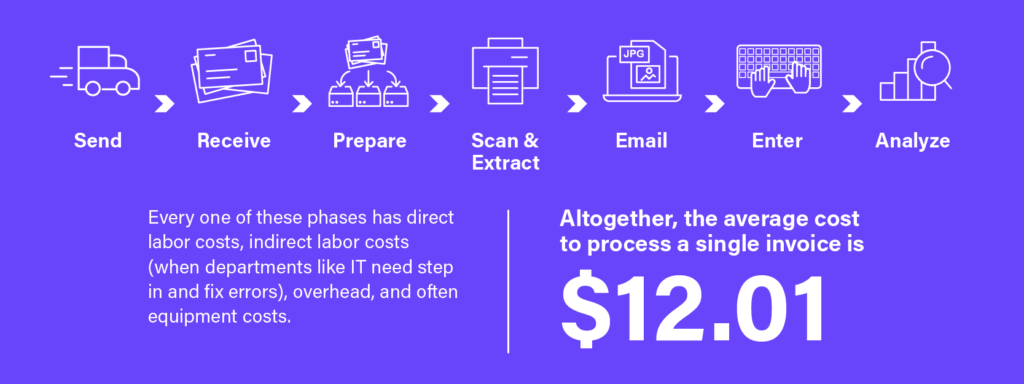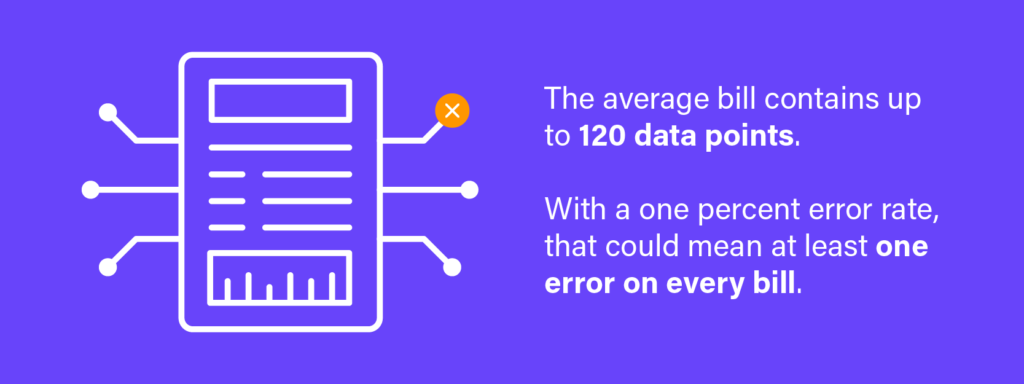
Energy Data Collection: Time to Get With the Times
Amy Hou | January 15, 2019 | Data & Technology | Energy & Sustainability
A lot has changed since 2001. Frosted tips are out (luckily for all of us), and climate action (again, fortunately) is in. The technology that powers scalable enterprise-level software has perhaps changed most dramatically of all. Despite the global explosion of cloud-based solutions across industries, though, many companies large and small are still relying on manual data entry to power their energy data collection programs.
Most are likely relying on this antiquated method to save on costs. They operate under the assumption that manual data entry is cheaper than investing in automation software or technology. But they’re not looking closely enough at what manual energy data collection actually costs.
What manual energy data collection costs
When these companies look at the cost of manual data entry, they might point to the cost of wages or salaries paid to data entry employees. If they outsource manual data entry, they would include that cost as well.
However, what most companies don’t realize is that the costs begin to add up long before anyone puts their fingers on a keyboard. We researched and interviewed dozens of companies that power their energy data collection manually to find out what their processes look like:

Every one of these phases has direct labor costs, indirect labor costs (when departments like IT need to step in and fix errors), overhead, and often equipment costs. Altogether, the average business pays $12.01 to process just one invoice manually.
And, in addition to these explicit costs, manual energy data collection comes with implicit costs that are even less often recognized:
The cost of poor data quality
Bad data quality can cost your company – or your client’s company – millions. On average, the cost of bad data falls between 15 percent and 25 percent of revenue for many companies.
This cost comes from errors in manually entered data: in other words, what it costs to find and fix mistakes. Even the best trained people make mistakes when they’re typing, copying, and pasting, which makes the data they handle completely unreliable.
On average, in-house data entry produces an error rate of about one percent. Doesn’t sound terrible, right? Except when it comes to utility bill data, the average bill contains up to 120 data points. With a one percent error rate, that could mean at least one error on every bill.

And it’s not just errors: manual energy data collection often results in missing data points or even entire missing bills. With such large gaps in data quality, enormous amounts of untapped savings are left unseen.
The cost of delayed information
Waiting on staff to manually enter utility data is a slow process. While your business and your clients are waiting, you both lose the opportunity to respond in real time. Too often, decisions are made from data that’s outdated from slow entry and processing, at which point they’re misinformed and not entirely relevant.
Meanwhile, as an organization chooses to depend on the inflexible method of manual data entry, it loses the ability to rapidly adapt and grow, leading to missed opportunities in new revenue growth and new business growth.
A leading software provider used to spend tens of thousands of dollars a month on express mail fees to get its customer’s bills paid on time.
Then there are the tangible costs of delayed information: late fees. When bills fail to be delivered and processed in time, payments are missed and late fees are incurred. Even the process to avoid late fees is costly; a leading software provider used to spend tens of thousands of dollars a month on express mail fees to get its customer’s bills paid on time.
The cost of misused resources
Let’s look at the obvious: running a team of staff dedicated entirely to energy data collection is expensive. More importantly, it’s not scalable. As your business grows, scaling your team to grow with it will quickly become unsustainable.
On the other hand, if data entry is only part of your employees’ jobs, they’ll be even more unproductive. Data entry is tedious, and mandating that as a job description inevitably lowers employee satisfaction. Overall, they’ll be less satisfied with their jobs, and that will reflect in their performance. Staff will most likely leave data entry to the last part of their day, and they aren’t likely to be enthusiastic or efficient as they go about it.
Even more importantly, if your full-time employees are spending time on energy data collection, consider all that they could accomplish with that time instead. Data analysis. Customer support. Strategic initiatives. All of these bring more value and revenue to your organization than the manual data entry they’re chained to now.
Bring your energy data collection up to speed
It’s time for a change. Urjanet’s automated, cloud-based platform can take on the heavy lifting of energy data collection so that you can eliminate these costs and focus on growing your business. The Urjanet Utility Data Platform automatically aggregates energy data from over 6,500 utility providers worldwide, delivering data straight to you as soon as it’s available – no more waiting on the mailman.
To learn more about how to save on costs and modernize your energy data collection, speak with a data expert today.
Related Resources:
- 7 Shortcomings of Manually Entering Utility Bill Data
- ENERGY STAR Portfolio ManagerⓇ + Data Automation: A Perfect Duo
- 7 Reasons Poor Data Quality Is Like Your Crazy Ex
If you like what you’re reading, why not subscribe?
About Amy Hou
Amy Hou is a Marketing Manager at Urjanet, overseeing content and communications. She enjoys writing about the latest industry updates in sustainability, energy efficiency, and data innovation.
You May Also Like
5 Steps to Audit Utility Data Quality
Honor Donnie | June 10, 2022 | Data & Technology
